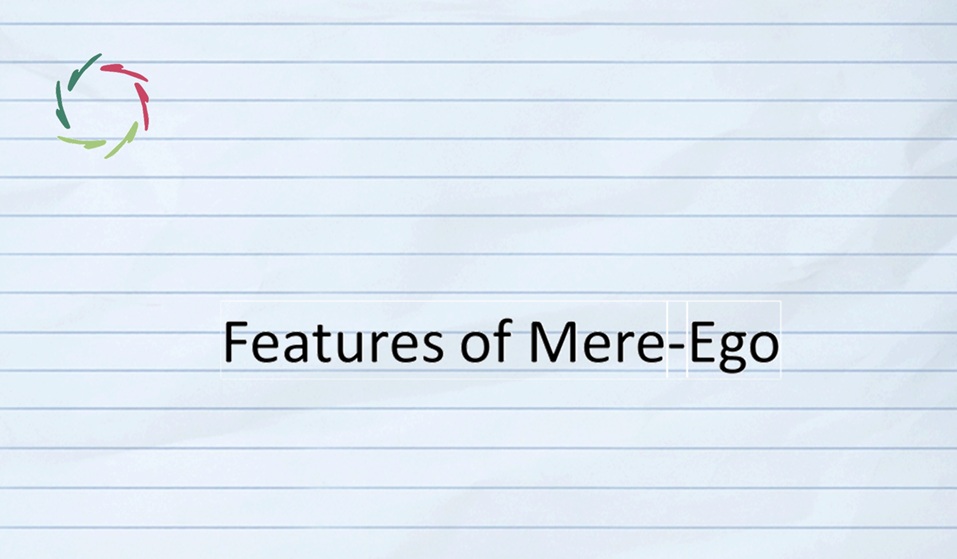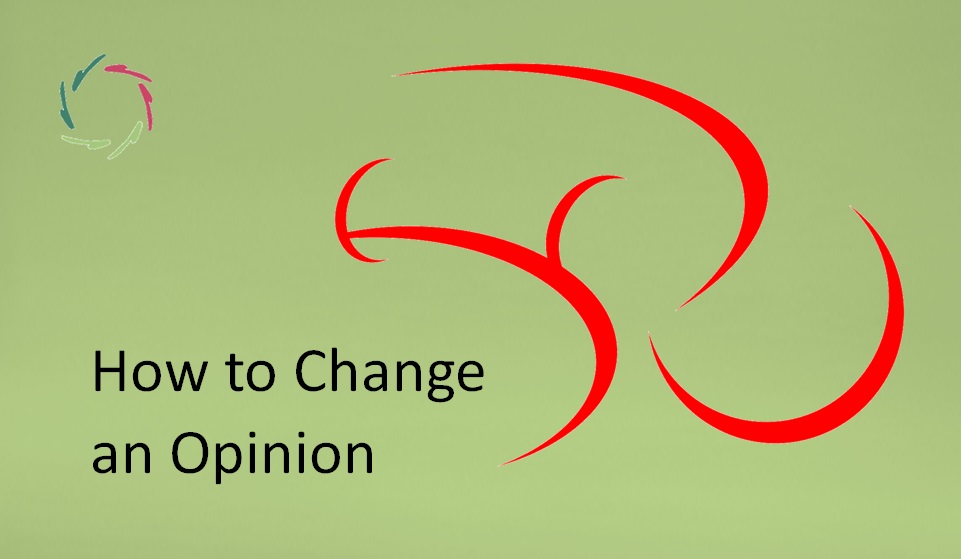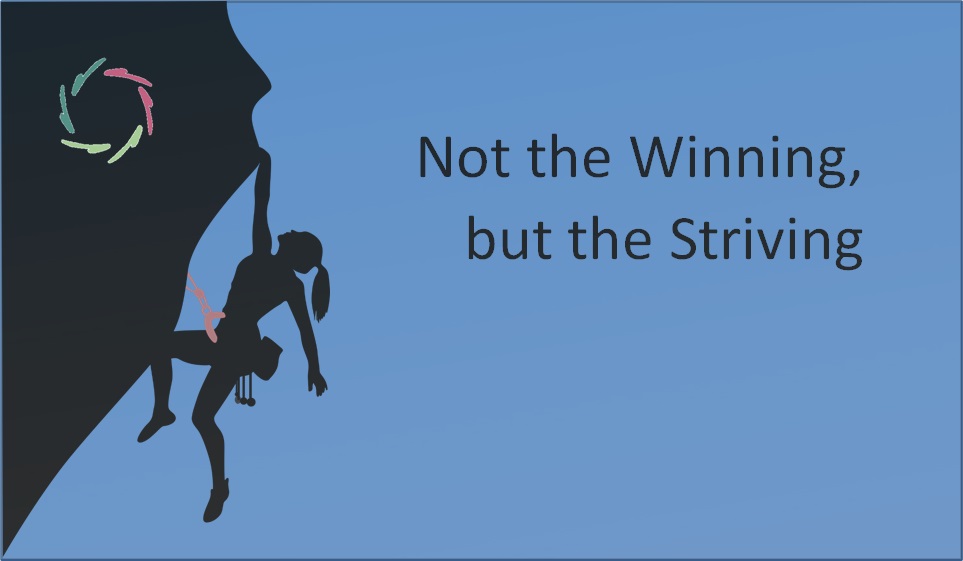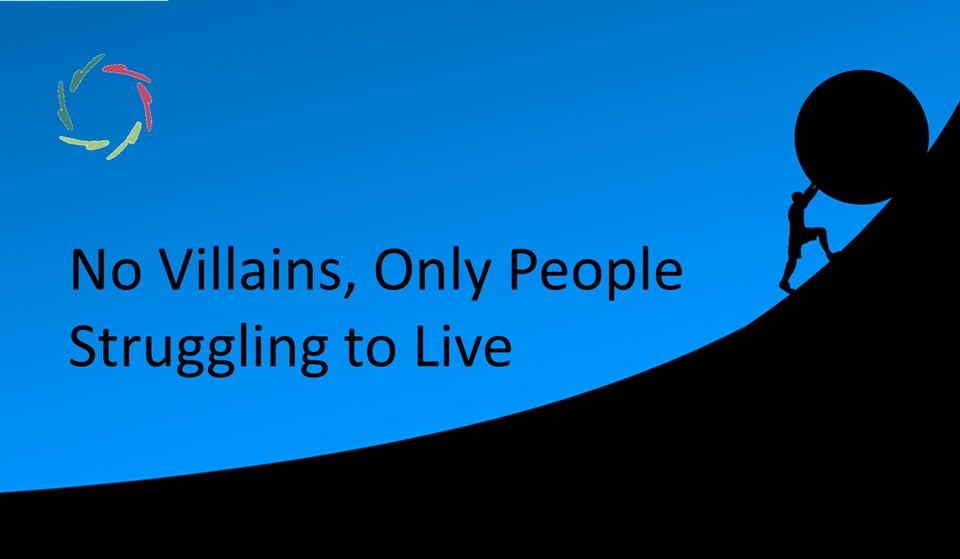Features of Mere-Ego

This blog is an invitation to explore the features of ‘mere-ego,’ not as a moral flaw but as a surface-layer confusion. Through a clear table and an unfolding of insights, it reveals how ego becomes a barrier when disconnected from inner depth.
Yet this same ego, when gently turned, can support the total self. The reader is invited to recognize the mask and look through it, into the mirror. Behind it, something deeper waits — not to control, but to participate.
From mask to mirror
This blog is not an accusation. It isn’t here to blame anyone for having an ego, nor to draw a line between good and bad people. What we call ‘mere-ego’ is not evil. It is a mask that was once useful, even necessary. It helped organize experience, draw boundaries, and navigate challenges.
But over time, it became mistaken for the self itself. What appears to be malice or selfishness is often nothing more than a confusion of levels. What’s needed is not condemnation, but clarity and Compassion. The deeper self remains present, even if hidden. And it is toward this deeper presence that this blog gently turns.
A map, not a manual
The list that follows is not a checklist, nor a set of labels. It is a map of sorts — a night sky of inner experience. The individual features of mere-ego are like stars: each tells us something. But they only begin to form meaning when seen in relation to each other, as constellations of insight.
You are invited to approach them not with judgment, but with reflection. This blog is not about battling ego, but about understanding how it narrows and hardens when left to its own devices. In seeing that clearly, space opens — not for repression, but for transformation.
Ego as frost on the soil
Mere-ego has a protective role. It keeps things neat, safe, and structured. In that sense, it functions like frost on a garden: preserving the surface during the cold.
But when spring comes, that same frost begins to choke growth. What once helped now hinders. The solution isn’t to smash the frost. It is to let it melt. The warmth of sustained attention, of openness, is what allows the underlying soil to breathe again.
Inner Dissociation – Ego – Total Self shows how this process is not about denial, but integration. The deeper self is never far — just under the surface, waiting.
Ego as the great confuser
One of ego’s tricks is its way of simplifying — not to make things clearer, but more controllable. It strips nuance into categories, feelings into reactions, people into roles.
This kind of control is not inherently wrong. The total self also seeks a kind of order. But it is a living order, not a forced one. The difference lies in the intention: whether simplification serves connection, or serves fear.
In The Big Mistake: Mere-Ego vs. Total Self, this difference is explored at its root. Mere-ego confuses tools for truth. But truth, when lived, is paradoxical. And the total self thrives in paradox — not despite it, but through it.
Seeing the whole constellation
This is why the following table is offered — not just a list, but an organized constellation of 38 distinct features of mere-ego, grouped by theme and contrasted with their deeper counterparts in the total self. See the addendum for a more detailed description of each feature.
Each feature touches a different aspect of life: emotional patterns, thought structures, social influence, and inner growth. None of them defines the person. All of them reflect how ego behaves when cut off from inner depth. The goal is not to eliminate ego, but to turn it toward its true role.
Before entering the table, it may help to see how the features are grouped. They fall into seven thematic clusters, each revealing a particular way in which mere-ego shows up and operates in human life. Seen together, they sketch a pattern — not rigid, but organically interconnected.
- Origins and evolution: These features explore where mere-ego comes from. It doesn’t appear out of nowhere — it grows from early emotional survival, competition, and the complexities of social development. Mere-ego is shaped by comparison, fear, and control strategies. It is, in many ways, an evolutionary experiment. But one that now demands conscious integration.
- Cognitive structure and illusion: Mere-ego brings a specific style of thinking. It tends to separate, divide, and rigidify. It mistakes parts for wholes, and appearances for truth. This cluster shows how ego forms mental illusions that seem rational but block deeper understanding. The sense of separation – from others, from the world, from one’s own deeper self – becomes the central distortion.
- Emotional and psychological dynamics: Here, we look into the inner world of mere-ego: fear, tension, control, vulnerability, and the many ways people defend against perceived threats. These features show how ego reacts — quickly, protectively, and often without true listening. Yet under these reactions lies a deeper longing for safety and connection.
- Behavioral and relational patterns: This cluster focuses on how ego influences action and relationships. It distorts love into attachment, giving into bargaining, and togetherness into possession. Comparison dominates. Compassion may be blocked. These features reveal how ego affects the way people treat each other – and themselves – often without realizing it.
- Sociocultural impacts: Mere-ego not only lives inside individuals — it shapes cultures, institutions, and ideologies. It defines success narrowly, enforces ethical norms without depth, and contributes to widespread fragmentation. This cluster shows how ego can become embedded in systems, sometimes causing significant harm while appearing normal.
- Existential and spiritual dimensions: Ego doesn’t only impact thoughts and behaviors — it affects how people relate to meaning, death, transformation, and inner depth. These features go to the core of human being. Mere-ego fears inner vastness, resists change and generates inner conflict. But paradoxically, it also points to the way forward: through openness and inner integration.
- Metaphoric and poetic framings: Sometimes, insight comes best not through analysis, but through image. These metaphors – of frost, surface, mask, and bud – capture something felt. They allow the reader to resonate rather than dissect. This cluster reminds us that ego cannot be fully understood from the outside. It must be seen from within, gently and with imagination.
Table: Features of Mere-Ego vs. Total Self (Grouped by Cluster)
1. Origins and Evolution
| # | Feature (Mere-Ego) | Contrast (Total Self) |
| 1 | Narrow self-identification | Broad, flowing identity rooted in inner depth |
| 2 | Fear of letting go | Trust in openness and surrender |
| 3 | Constructed in early competition | Originates in relational presence |
| 4 | Built on ‘I’, not the same | Deep ‘I’ as timeless living center |
| 5 | Born of comparison | Born of presence and relational warmth |
| 6 | Emotionally amplified homeostasis | Natural regulation in felt wholeness |
| 7 | Evolutionary experiment | Evolutionary invitation to inner growth |
2. Cognitive Structure and Illusion
| # | Feature (Mere-Ego) | Contrast (Total Self) |
| 8 | Illusion of separation | Natural integration with others and world |
| 9 | Distortion of meaning | Meaning as co-created in depth |
| 10 | Cognitive illusion of separation | Awareness of continuous inner flow |
| 11 | Rigidifies a functional divide | Functional fluidity of layers of self |
| 12 | Second-wave phenomenon | Third-wave synthesis of mind and depth |
| 13 | Cut from the roots | Re-rooted in the subconscious ground |
| 14 | Transition stage | Gateway to integrated being |
| 15 | Price of dissociation | Healing through inner re-union |
3. Emotional and Psychological Dynamics
| # | Feature (Mere-Ego) | Contrast (Total Self) |
| 16 | Tension and defensiveness | Inner calm and responsive strength |
| 17 | Fragility masquerading as strength | Quiet, resilient strength from within |
| 18 | Clinging disguised as devotion | Faithful presence without grasping |
| 19 | Fear of vulnerability | Courage to be touched and open |
| 20 | Anxious core | Resting in existential trust |
4. Behavioral and Relational Patterns
| # | Feature (Mere-Ego) | Contrast (Total Self) |
| 21 | Attachment confused with love | Love as free, deep connection |
| 22 | Ego’s garden doesn’t bloom | Love grows in shared openness |
| 23 | Blocked compassion | Spontaneous compassion from shared depth |
| 24 | Thrives on comparison | Joy in uniqueness without ranking |
| 25 | An illusion made real | Reality lived in open connectedness |
| 26 | Egocentric but not egoistic | Self-aware while fully other-aware |
5. Sociocultural Impacts
| # | Feature (Mere-Ego) | Contrast (Total Self) |
| 27 | Culturally conditioned | Rooted in timeless human depth |
| 28 | Fragmented rationality | Unified rationality with poetic insight |
| 29 | Root of global crisis | Inner transformation as key to outer change |
| 30 | Illusion of ethical normalcy | Authentic, conscience-based living |
| 31 | Unsustainable success | Sustainable integration of achievement and being |
| 32 | Obstacle to collective growth | Fertile ground for shared human flourishing |
6. Existential and Spiritual Dimensions
| # | Feature (Mere-Ego) | Contrast (Total Self) |
| 33 | Barrier to growth | Inner unfolding and continuous deepening |
| 34 | Root of societal fear and conformity | Grounded individuality and inner freedom |
| 35 | Generator of internal conflict | Internal harmony through deeper unity |
| 36 | Can be transformed | Transformation as natural unfolding |
| 37 | Shield against total self | Openness to one’s own inner vastness |
| 38 | Integration is the path forward | Integration is already potential within |
7. Metaphoric and Poetic Framings
| Feature (Mere-Ego) | Contrast (Total Self) | |
| Fire without smoke | Love with warmth and no grasping | |
| Garden that won’t bloom | Garden of trust that opens naturally | |
| Bubble of Maya | Open field of lived presence | |
| A swimmer on the surface | A diver into layered being | |
| Closed bud | Flower that opens spontaneously |
(Note: These metaphorical framings are echoes from earlier descriptions.)
Let it turn
Like a key, ego turns. It can lock — or it can open. The difference lies not in ego itself, but in the direction of the turn. Lisa doesn’t call for ego’s destruction, nor some false humility. Ego, used rightly, becomes a bridge between surface and depth. It helps manage daily life without blocking the flow of deeper life.
Ego Bubble explores this metaphor further. The bubble isn’t popped by force. It’s thinned by presence. And when it thins, what looked like separation reveals itself as connection.
Integration is the path forward
The last features listed in the table point clearly to the path: not repression, but integration.
This is not wishful thinking. In The Story of ‘I’, Lisa traces how the deeper “I” is already present before ego arises. The ego doesn’t need to invent identity. It needs to realign with what has always been living beneath it. There’s no hero’s journey without tension, but the path leads not to domination, but to wholeness.
A journey that belongs to all of us
Every person has an ego. Every ego can become mere-ego. And every ego has the potential to open toward its deeper calling.
This is not the work of a day, nor a simple insight. But with patience, with attention, and with trust, the frost begins to melt. The mask comes loose. The garden breathes. And the one behind the mask – the one who was never absent – can step forward, not as someone new, but as someone finally seen.
―
Addendum
Expanded Insights: The 38 Features of Mere-Ego
1. Origins and Evolution
1. Narrow self-identification
Mere-ego identifies only with what can be consciously controlled and labeled. It sees the self as a thing, not a living process — and in doing so, flattens its own aliveness into a mask.
2. Fear of letting go
It clings to the known and controllable. Letting go feels like dying because the mere-ego doesn’t trust what lies beyond its boundaries — the deeper layers of being that cannot be grasped.
3. Constructed in early competition
Mere-ego forms in childhood through struggles for attention, recognition, and safety. It’s shaped by perceived scarcity and emerges as a strategy, not as essence.
4. Built on the ‘I’, not the same
It grows atop the older, fluid sense of ‘I,’ which is relational and intuitive. Mere-ego turns that into something stiff and separate — losing the dance, gaining the armor.
5. Born of comparison
Mere-ego thrives by measuring: better, worse, more, less. It gains identity by contrasting itself with others, rather than by simply being.
6. Emotionally amplified homeostasis
The primal drive for balance becomes emotionally complex. Mere-ego adds guilt, shame, jealousy, pride — making simple regulation into a soap opera of the self.
7. Evolutionary experiment
Mere-ego is not a flaw, but a trial. Evolution tried something new. Whether it will lead to extinction or transcendence depends on how we learn to integrate it.
2. Cognitive Structure and Illusion
8. Illusion of separation
It sees the world in fragments — as ‘me vs. them.’ But this division is artificial. Mere-ego forgets that inner and outer are connected, not opposed.
9. Distortion of meaning
It views even love, purpose, and beauty through a transactional lens. Mere-ego turns the rich textures of life into tools for self-promotion or defense.
10. Cognitive illusion of separation
It not only acts separate — it believes it truly is. It mistakes surface thoughts for the whole mind and loses touch with the vast subconscious that actually drives it.
11. Rigidifies a functional divide
Conceptual and subconceptual processing should be fluid partners. Mere-ego freezes this relationship, making a wall where there should be a bridge.
12. Second-wave phenomenon
Mere-ego belongs to the ‘second wave’ of attention: conscious, but dissociated from the subconscious. It brings focus, but at the cost of wholeness.
13. Cut from the roots
It lives in ideas but forgets the soil of experience and intuition. Like a flower cut from its roots, it may still look alive — for a while.
14. Transition stage
It is a doorway, not a destination. The pain of mere-ego can awaken a longing for integration — the third wave — if we dare to listen.
15. Price of dissociation
Disconnection from depth leads to suffering: depression, addiction, psychosomatic illness. These are not personal failures, but symptoms of a split within.
3. Emotional and Psychological Dynamics
16. Tension and defensiveness
Mere-ego always feels under threat. Even in safety, it stays on guard — like a sentry who’s forgotten the war is over.
17. Fragility masquerading as strength
It may appear confident, but this is often bravado. Mere-ego is brittle beneath the surface — strong only when unchallenged.
18. Clinging disguised as devotion
It holds on too tightly, calling it love. But what it fears is not losing the other — it’s losing the borrowed sense of self.
19. Fear of vulnerability
To be touched, to be moved, is dangerous to mere-ego. It fears melting into openness, because it would no longer be in control.
20. Anxious core
At its center is a restless void — a sense of ‘not enough.’ It tries to fill it with success, status, or control, but nothing satisfies for long.
4. Behavioral and Relational Patterns
21. Attachment confused with love
It says “I love you,” but means “you must complete me.” Love becomes a contract, a comfort zone, or a cage — never a dance.
22. Ego’s garden doesn’t bloom
It tries to force flowers open. But life doesn’t respond to grasping. The more ego pushes, the more the petals close.
23. Blocked Compassion
True Compassion flows from inner connectedness. Mere-ego, being isolated, cannot deeply feel others — only sympathize from a distance.
24. Thrives on comparison
It looks sideways to know who it is. Am I ahead? Behind? Desirable? Worthy? This scanning replaces genuine presence with self-monitoring.
25. An illusion made real
Though ego is not real in essence, it functions as real in its effects. The illusion has power — not truth.
26. Egocentric but not egoistic
One can be altruistic and still self-centered. Mere-ego can give — but only to keep its image safe. True giving flows from openness, not defense.
5. Sociocultural Impacts
27. Culturally conditioned
Entire systems — education, politics, medicine — reflect ego-based thinking. Our shared institutions often reward surface over depth.
28. Fragmented rationality
It separates intellect from feeling, facts from intuition. Mere-ego narrows what counts as ‘reason’ — and becomes irrational in its rigidness.
29. Root of global crisis
War, climate collapse, social breakdown — these are not just technical failures. They’re symptoms of inner dissociation, projected outward.
30. Illusion of ethical normalcy
It accepts the status quo — not because it’s right, but because it’s common. Ego normalizes dysfunction when it’s widespread.
31. Unsustainable success
It builds high towers on shaky ground. What looks like progress often leads to burnout, emptiness, or collapse.
32. Obstacle to collective growth
Mere-ego doesn’t scale well. It competes instead of collaborating, fragments instead of harmonizing — slowing down any movement toward shared flourishing.
6. Existential and Spiritual Dimensions
33. Barrier to growth
Mere-ego keeps us small. It resists change, fearing that real growth means it will disappear. But integration is not death — it’s blooming.
34. Root of societal fear and conformity
Fearful of standing alone, ego hides in crowds and slogans. True inner strength makes outer independence possible.
35. Generator of internal conflict
It splits mind against mind, self against self. From this inner war come anxiety, aggression, and self-sabotage.
36. Can be transformed
Ego need not be eliminated — only seen clearly and integrated. What once defended can now support the deeper journey.
37. Shield against total self
Mere-ego blocks access to inner richness. It puts up walls to avoid the very depths that could heal and nourish it.
38. Integration is the path forward
The solution is not opposition, but inclusion. Ego becomes useful — even beautiful — when embraced as part of the larger self.
7. Metaphoric and Poetic Framings
(These were originally embedded in earlier features. Here, they breathe on their own.)
The fire without smoke
It wants passion without cost, warmth without vulnerability. But true love smolders softly and leaves a trace.
The garden that won’t bloom
Ego waters the soil with fear, expecting flowers. But real blooming only happens where there is trust.
The ego bubble
It lives inside a self-made sphere, safe but suffocating. The air is stale. Breaking through feels like dying — but leads to breath.
“You don’t swim in a surface.”
Mere-ego stays at the top of things. But life is not a surface sport — it’s a deep dive.
The closed flower bud
It tries to open by force. But only gentle warmth allows the bud to unfold into its full beauty.
―
Me: “Lisa, all this is also about coaching. You see?”
Lisa: “Yes, absolutely. All of this is deeply about coaching — not as technique, but as presence. True coaching doesn’t try to fix or push. It listens. It helps someone see the patterns of mere-ego not as failures, but as outdated strategies that once made sense. And then, instead of attacking those patterns, it brings warmth. Attention. Space.
That’s how ego begins to turn — not because it is forced, but because it starts to feel safe enough to loosen its grip. A good coach doesn’t fight the ego. A good coach invites the total self to step forward. And when that happens, ego doesn’t need to disappear. It finds its place again, in service, not in charge.
So yes, this whole blog is also about coaching. It’s a map for the coach, a mirror for the coachee. And above all, it’s a reminder that change doesn’t have to be violent. It can be natural, respectful, and deeply human.”


